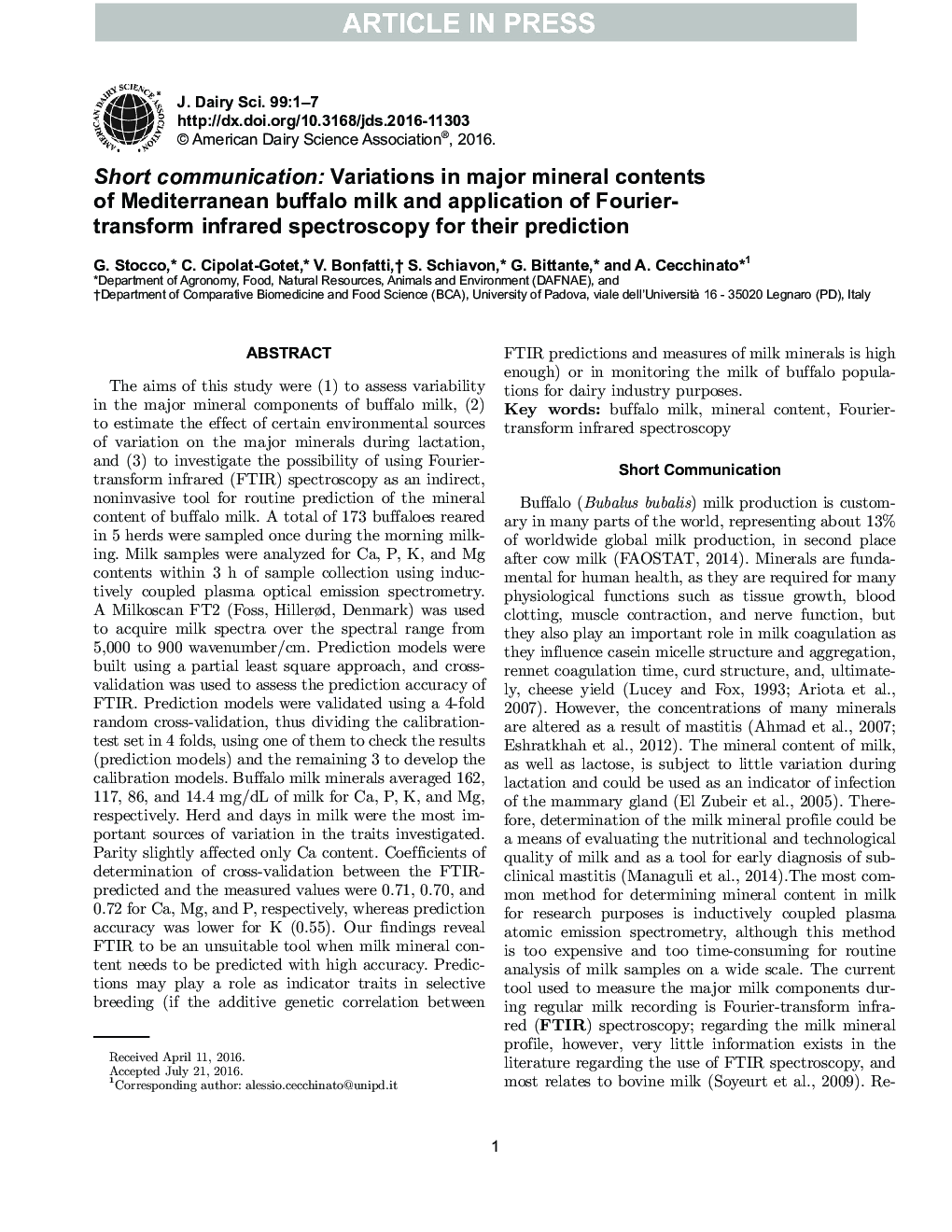| Article ID | Journal | Published Year | Pages | File Type |
|---|---|---|---|---|
| 5542646 | Journal of Dairy Science | 2016 | 7 Pages |
Abstract
The aims of this study were (1) to assess variability in the major mineral components of buffalo milk, (2) to estimate the effect of certain environmental sources of variation on the major minerals during lactation, and (3) to investigate the possibility of using Fourier-transform infrared (FTIR) spectroscopy as an indirect, noninvasive tool for routine prediction of the mineral content of buffalo milk. A total of 173 buffaloes reared in 5 herds were sampled once during the morning milking. Milk samples were analyzed for Ca, P, K, and Mg contents within 3 h of sample collection using inductively coupled plasma optical emission spectrometry. A Milkoscan FT2 (Foss, Hillerød, Denmark) was used to acquire milk spectra over the spectral range from 5,000 to 900 wavenumber/cm. Prediction models were built using a partial least square approach, and cross-validation was used to assess the prediction accuracy of FTIR. Prediction models were validated using a 4-fold random cross-validation, thus dividing the calibration-test set in 4 folds, using one of them to check the results (prediction models) and the remaining 3 to develop the calibration models. Buffalo milk minerals averaged 162, 117, 86, and 14.4 mg/dL of milk for Ca, P, K, and Mg, respectively. Herd and days in milk were the most important sources of variation in the traits investigated. Parity slightly affected only Ca content. Coefficients of determination of cross-validation between the FTIR-predicted and the measured values were 0.71, 0.70, and 0.72 for Ca, Mg, and P, respectively, whereas prediction accuracy was lower for K (0.55). Our findings reveal FTIR to be an unsuitable tool when milk mineral content needs to be predicted with high accuracy. Predictions may play a role as indicator traits in selective breeding (if the additive genetic correlation between FTIR predictions and measures of milk minerals is high enough) or in monitoring the milk of buffalo populations for dairy industry purposes.
Related Topics
Life Sciences
Agricultural and Biological Sciences
Animal Science and Zoology
Authors
G. Stocco, C. Cipolat-Gotet, V. Bonfatti, S. Schiavon, G. Bittante, A. Cecchinato,
